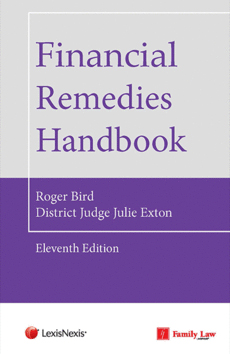- News & Comment
-
Online Shop
Online Services
Looseleafs
Law Reports
Books and eBooks
-
CPD & Events
Webinars
Events
- Authors
- About Family Law
- Contact












 31 MAR 2025
31 MAR 2025

 31 MAR 2025
31 MAR 2025

 31 MAR 2025
31 MAR 2025

 31 MAR 2025
31 MAR 2025

 31 MAR 2025
31 MAR 2025







 The Financial Remedies Handbook is the first resort for thousands of matrimonial lawyers by combining a clear explanation of the applicable legal principles with straightforward advice on practice and procedure.
The Financial Remedies Handbook is the first resort for thousands of matrimonial lawyers by combining a clear explanation of the applicable legal principles with straightforward advice on practice and procedure.A standard format:
You should submit a main file of both online and paper files in the following chronological order:
There should be a separate folder for:
Where possible all work should be in chronological order.
Where files are being submitted electronically they should be clearly labelled to indicate what each file contains.
For example, ‘work dated 01/01/2015 to 30/06/2015’ or ‘letters and emails 2015’.
The LAA's preference is for the electronic file to be uploaded via a cloud-based storage system. Where files are being submitted electronically as a PDF/Word document these should be separated into reasonable size files. Each upload should be a maximum of 8mb. You should note that the LAA is unable to download documents.
Where possible, electronic documents should be searchable. This will help ensure that caseworkers can easily identify the correct documentation on assessment and should reduce the level of queries or assessments.
Similarly, where using a cloud-based system, the LAA's preference is that it only has access to the files needed for assessment. This assists with finding the correct documentation, makes the process quicker and reinforces data security.




